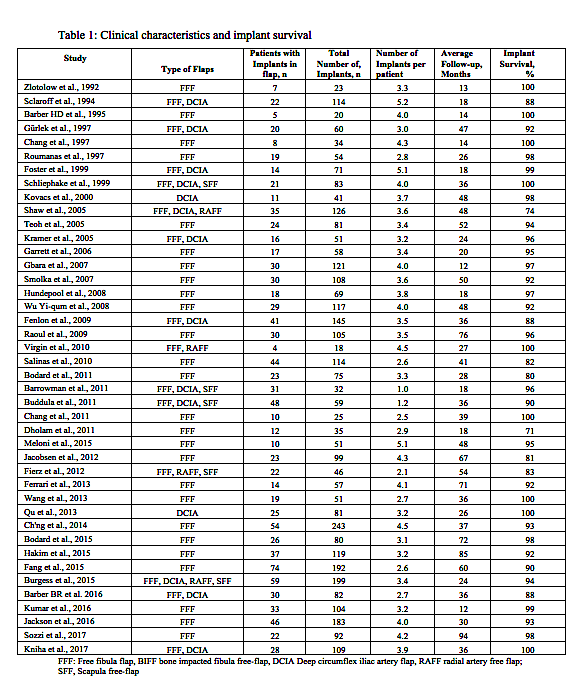Survival Outcomes of Osseointegrated Dental Implants in Vascularised Bone Flap Used for Reconstruction Following Maxillary and Mandibular Resection- A Systematic Review
Hina Panchal, MD MPH, Ivana Petrovic, DMD, Evan Rosen, DMD, Robert Allen, Jr., MD, Marisol Hernandez, MLS, MA, Joseph Disa, MD, Babak J. Mehrara, MD, Evan Matros, MD, MMSc, MPH, Jonas A. Nelson, MD.
Memorial Sloan Kettering Cancer Center, New York, NY, USA.
BACKGROUND: Oromaxillofacial defects among patients with surgical resection of mandible or maxilla can substantially affect health-related quality of life. Reconstruction using microvascular bone-transfer restores facial contour, structural support, and provides an opportunity to establish dental occlusion allowing mastication. While literature maintains high free-flap survival, osseointegration of implants in the reconstructed jaw is still a matter of debate. Herein, we performed a systemic review examining implant survival in patients who underwent reconstruction with vascularized bone-flap following mandibular or maxillary resection. METHODS: Following PRISMA guidelines, English language papers were queried on PubMed, Embase, and Cochrane platforms using MeSH terms. Studies involving segmental resection of mandible or maxilla followed by reconstruction using osseous/composite free-flap(s) implanted with the dental fixture(s) were included. Studies involving single case reports, non-human subjects, and inadequate information about implant survival were excluded. Weighted implant survivals were calculated for the entire cohort and sub-cohorts stratified by radiotherapy: non-radiation, pre-implant radiation, and post-implant radiation. RESULTS: From 3965 publications identified initially, 42 studies were reviewed. Among all, 2136 patients underwent vascularized osseous reconstruction following segmental resection of mandible, maxilla or both at median age of 54 years. From the total, 1092 patients received 3627 dental implants (Table-1). Overall implant survival was 95% at median follow-up of 36 months (range: 71-100%; Table-1). Non-radiation patients experienced the best survival (94 % at 37 months vs. 85% in radiated patients at 42 months). Weighted survival was significantly greater in patients with radiations following implant placement compared to those who had radiations before implantation (88 vs. 81%; p=0.012). CONCLUSIONS: In this most up-to-date and comprehensive review of implant survival in reconstructed mandible or maxilla, the majority of dental implants osseointegrated in vascularized bone-flap demonstrating 95% median survival at three-years. Implants placed before the radiation of free-flaps had superior survival rate compared to those placed after radiations. These findings can be valuable to enhance surgical decision-making in patients who need implant-placement after reconstruction. 
Back to 2018 Posters




